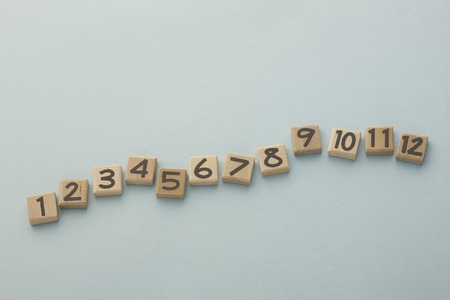Understanding Pendulum Dowsing: Origins and Cultural Context
Pendulum dowsing, often regarded as a mystical practice, has deep roots that trace back centuries across various cultures. Traditionally, it involved using a weighted object suspended from a string or chain to locate water, minerals, or hidden objects. While its earliest documented uses appear in ancient Egypt and China, the practice gained prominence in Europe during the Middle Ages, where it was commonly associated with finding underground water sources—a skill vital for survival and agriculture.
As pendulum dowsing traveled through time and continents, its applications expanded beyond resource location. In the modern era, particularly within American wellness and holistic communities, pendulum dowsing has evolved into a tool for exploring health and self-care concerns. Influenced by New Age philosophies and integrative health movements in the United States, practitioners have adapted dowsing techniques to address questions about physical well-being, emotional balance, and even spiritual growth.
Within American culture, the perception of pendulum dowsing is diverse. Some view it with skepticism due to its non-scientific foundations, while others embrace it as part of a broader commitment to alternative medicine and personal empowerment. This duality reflects America’s unique blend of scientific inquiry and openness to holistic practices. As a result, pendulum dowsing has found its niche within yoga studios, wellness workshops, and self-care routines across the country—serving both as an ancient art and a contemporary wellness tool.
2. How Pendulum Dowsing Works: The Science, Theories, and Skepticism
Pendulum dowsing is a practice that involves using a suspended weighted object—often a crystal, metal, or wood—attached to a chain or string. Practitioners ask questions or seek guidance about health and wellness issues, then observe the movement of the pendulum as a source of answers. Typically, the pendulum is held steady over a chart, written question, or simply in mid-air. When a question is posed, the pendulum may swing in specific directions (back and forth, side to side, or in circles), which are interpreted as “yes,” “no,” or other answers based on pre-established meanings.
The Practical Process of Pendulum Dowsing
| Step | Description |
|---|---|
| 1. Selection | Choose a pendulum made of preferred material (crystal, metal, wood). |
| 2. Calibration | Determine what each movement means (e.g., clockwise = yes). |
| 3. Question Framing | Formulate clear health-related questions. |
| 4. Observation | Hold the pendulum steady and observe its motion after asking. |
| 5. Interpretation | Translate the pendulum’s movement into an answer. |
Scientific and Subjective Explanations
The scientific community largely attributes pendulum dowsing outcomes to the ideomotor effect—a psychological phenomenon where individuals make small, unconscious movements in response to thoughts or expectations. This means that any movement of the pendulum may be involuntarily produced by the dowser themselves rather than by any external force or energy field. However, subjective explanations within holistic and alternative health communities suggest that the pendulum acts as a tool for tapping into intuition or subtle energies, potentially revealing subconscious knowledge about one’s body or environment.
Common Scientific and Subjective Perspectives
| Scientific Viewpoint | Subjective/Alternative Viewpoint |
|---|---|
| Ideomotor response guides movement unconsciously. | Pendulum channels intuition or universal energy. |
| No reproducible evidence supporting effectiveness for diagnosis. | User’s personal experience validates its use in self-care. |
| Pendulum outcomes are often random or self-fulfilling. | Pendulum can reveal imbalances not detected by conventional methods. |
Skepticism and Ongoing Debates in Wellness Fields
Despite anecdotal reports from practitioners who claim benefits in self-awareness and decision-making for health matters, skepticism remains strong among medical professionals. Critics argue that relying on pendulum dowsing can lead to delayed treatment or false reassurance regarding serious health concerns. Proponents counter that when used responsibly—as an adjunct to professional care—it can foster mindfulness and personalized wellness routines. The ongoing debate highlights the importance of distinguishing between complementary practices and evidence-based medical interventions.
![]()
3. Practical Applications for Health and Self-Care
Pendulum dowsing has found a unique niche in the American holistic wellness community as a tool for supporting everyday self-care decisions. In practice, individuals use pendulums to gain insight into their physical, emotional, and energetic states, empowering them to make more informed choices about their well-being.
Making Wellness Decisions
One of the primary ways Americans incorporate pendulum dowsing into their self-care routines is by seeking guidance on lifestyle choices. Whether it’s determining if they need more rest, which exercise regimen to follow, or evaluating dietary adjustments, people often turn to the pendulum as an intuitive check-in. The process usually involves holding the pendulum and asking clear yes/no questions related to specific health concerns or daily habits. While not a substitute for medical advice, many users appreciate how dowsing can help them tune into subtle signals from their body and mind.
Supplement Selection
With an overwhelming array of vitamins, minerals, and herbal remedies on the market, supplement selection can be daunting. Pendulum dowsing offers an alternative approach by allowing individuals to intuitively “test” which supplements might be most beneficial at a given time. For instance, someone might hold a supplement bottle while asking the pendulum if it aligns with their current health needs. This practice reflects a broader trend in American wellness culture—integrating personalized and holistic methods alongside conventional research when making health-related decisions.
Supporting Emotional Well-Being
Beyond physical health, pendulum dowsing is also used to nurture emotional balance and resilience. Many practitioners believe that energetic imbalances often manifest as emotional distress or anxiety. By using the pendulum to identify areas of stress or blocked energy, individuals can bring greater awareness to their emotional landscape. Some even pair dowsing with mindfulness techniques or journaling to foster clarity and self-reflection. This approach resonates with the growing emphasis in America on mental health and self-compassion as foundational aspects of overall well-being.
4. Navigating Ethics, Safety, and Personal Responsibility
Pendulum dowsing for health and self-care can be an intriguing personal journey, but it’s essential to approach this practice with a clear sense of ethics, safety, and personal responsibility. While many Americans are open to exploring holistic wellness techniques, it’s important to distinguish between personal exploration and professional medical care.
Ethical Usage in Self-Care
Ethics play a central role when engaging with pendulum dowsing. Practitioners should use dowsing as a supplementary tool for self-reflection or decision-making rather than a replacement for evidence-based medical practices. It is never ethical to use pendulum dowsing to diagnose or treat others without proper qualifications or consent.
| Consideration | Recommended Approach |
|---|---|
| Self-Use Only | Limit pendulum dowsing to your own wellness journey unless you have explicit permission and proper training. |
| Confidentiality | Respect privacy; avoid sharing sensitive information revealed during sessions without consent. |
| Transparency | Clearly state that pendulum dowsing is not a substitute for licensed healthcare. |
Personal Responsibility in Practice
Using a pendulum responsibly means being honest with yourself about its limitations. Results from dowsing should be viewed as personal insight rather than definitive answers. American wellness culture values self-awareness—so regularly check in with your intentions and the possible impact of your actions on yourself and others.
Key Aspects of Personal Responsibility:
- Acknowledge that pendulum dowsing is subjective and may be influenced by your expectations or emotions.
- Avoid making significant health decisions solely based on dowsing outcomes.
- If offering guidance to friends or family, encourage them to seek diverse perspectives.
Knowing When to Seek Professional Medical Advice
No matter how experienced you become with pendulum dowsing, there are clear boundaries where professional medical advice is essential. In the U.S., self-care practices are encouraged as long as they complement—not replace—conventional healthcare. If you experience persistent symptoms or serious health concerns, always consult a qualified healthcare provider. Pendulum dowsing should never delay or deter seeking professional help in emergencies.
When to Call a Professional:
- Unexplained physical pain or severe symptoms
- Mental health crises or emotional distress
- Ongoing conditions requiring diagnosis or treatment plans
- Decisions regarding medication changes or surgeries
Navigating these ethical, safety, and personal responsibility considerations ensures that pendulum dowsing remains a safe, supportive part of your broader wellness toolkit—one that honors both personal intuition and the expertise of healthcare professionals.
5. Integrating Pendulum Dowsing into Modern Wellness Routines
For Americans exploring holistic health, blending traditional and modern self-care is increasingly popular. Pendulum dowsing can be thoughtfully integrated into your wellness routine alongside established practices like journaling and mindfulness, creating a personalized approach to well-being. Here are some practical tips for responsible integration:
Start with Intention Setting
Before using your pendulum, take a few moments to clarify your intention. This could mean focusing on a particular wellness goal, such as stress reduction or clarifying dietary choices. Setting an intention helps ground your practice and aligns it with your broader self-care objectives.
Combine with Journaling
After each pendulum session, jot down your questions, responses, and any intuitive feelings in a dedicated journal. Over time, this record can reveal patterns and provide valuable self-insight. Reflecting on these entries supports accountability and encourages critical thinking about the process.
Pair with Mindfulness Techniques
Use mindfulness techniques—like deep breathing or short meditations—before and after dowsing to center yourself. This promotes relaxation, minimizes distractions, and helps you remain open-minded yet discerning about the information you receive.
Create Consistent Rituals
Integrate pendulum dowsing into your existing routines by choosing regular times—such as before bed or after morning meditation. Consistency fosters habit-building while keeping the practice grounded in your daily life.
Respect Boundaries and Seek Balance
Pendulum dowsing should complement—not replace—professional medical advice or evidence-based wellness strategies. Use it as one tool among many, recognizing its role in supporting intuition rather than making definitive health decisions.
Engage with Community Resources
Connect with local wellness groups, workshops, or online forums to share experiences and learn best practices. Responsible integration means staying informed and open to learning from others within the American holistic health community.
By weaving pendulum dowsing into established self-care routines like journaling and mindfulness, Americans can enhance their wellness journeys responsibly—drawing from both tradition and modern evidence-based approaches.
6. Stories from the Field: Testimonials and Case Studies
Pendulum dowsing for health has found a receptive audience among Americans seeking holistic wellness solutions. Across the United States, both seasoned practitioners and curious newcomers have shared their journeys, offering insight into how this ancient technique blends with modern self-care routines.
Case Study: Supporting Chronic Pain Management
One notable example comes from Lisa, a certified holistic health coach based in California. After struggling with chronic back pain for years, Lisa integrated pendulum dowsing into her daily wellness practice. By using her pendulum to identify energetic blockages and test for compatible natural remedies, she reported a significant reduction in discomfort and an increased sense of agency over her healing process. Lisa now incorporates pendulum work into sessions with clients who are open to energy-based modalities, emphasizing it as a complementary tool rather than a replacement for medical care.
Testimonial: Enhancing Emotional Well-Being
John, a mental health counselor from Texas, began experimenting with pendulum dowsing during the COVID-19 pandemic to manage anxiety and emotional fatigue. He shares that regularly checking his energy centers (chakras) with his pendulum has helped him recognize when he needs rest or emotional support. John’s testimonial highlights how pendulum dowsing can foster greater self-awareness and encourage proactive self-care strategies, even among skeptics who initially approach the practice with caution.
Community Experiences: Group Wellness Sessions
In Portland, Oregon, a local wellness group hosts monthly “Pendulum Nights,” inviting members to explore personal health questions using dowsing techniques. Participants often report feeling more connected to their intuition and gaining fresh perspectives on lifestyle choices such as diet, exercise, and stress management. While not all attendees experience immediate results, many appreciate the sense of empowerment and community that these gatherings provide.
A Balanced Perspective
While personal stories like these underscore pendulum dowsing’s appeal, practitioners consistently emphasize its role as a complementary approach—never a substitute for professional medical advice or treatment. Most American enthusiasts recommend keeping an open mind, documenting experiences in wellness journals, and integrating feedback from licensed healthcare providers when exploring pendulum dowsing for health. These collective experiences paint a nuanced picture of how traditional wisdom is being adapted within contemporary American self-care culture.
7. Conclusion: Balancing Tradition and Evidence in Contemporary Self-Care
As we navigate the growing landscape of wellness practices in the United States, integrating traditional methods like pendulum dowsing with evidence-based self-care strategies invites both reflection and discernment. Many Americans are drawn to holistic approaches that honor mind, body, and spirit—seeking meaning and empowerment in their personal health journeys. Pendulum dowsing, rooted in centuries-old traditions, offers a unique perspective for self-inquiry and intuitive guidance. However, when exploring such methods, its crucial to approach them with an open yet critical mindset.
Modern self-care is most effective when it balances respect for tradition with scientific understanding. While some individuals report positive experiences using pendulum dowsing for decision-making or stress reduction, current medical research does not support its use as a substitute for professional healthcare or evidence-based interventions. Instead, pendulum dowsing can be thoughtfully incorporated as a complementary practice—serving as a mindfulness tool or a means of fostering personal reflection alongside proven wellness habits such as exercise, balanced nutrition, and regular medical checkups.
In the American context—where diversity of belief and access to information are core values—it’s essential to empower individuals with accurate knowledge. Informed choices come from recognizing both the cultural significance of traditional practices and the importance of validated health strategies. By blending curiosity about ancient wisdom with a commitment to scientific integrity, we create space for authentic well-being that honors both our heritage and our health needs.
Ultimately, the journey toward wellness is deeply personal. Whether you explore pendulum dowsing out of curiosity or tradition, remember to prioritize safety, consult qualified health professionals when needed, and make room for ongoing learning. By balancing time-honored practices with modern evidence, you can craft a self-care routine that feels both meaningful and responsible—embracing the best of both worlds on your path to holistic wellness.


